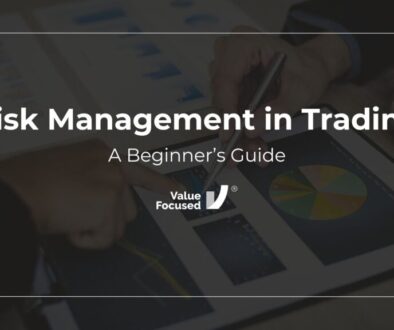Navigating the Complexities of Investing in India’s Diverse Stock Market
India’s stock market is one of the most diverse in the world, with over 5,000 listed companies representing a multitude of industries and sectors.
However, navigating such a complex market can be challenging for even the most experienced investors. With numerous cultural and economic factors at play, it’s essential to have a deep understanding of India’s business landscape before diving into its stock market.
In this blog post, we’ll explore how to successfully invest in India’s diverse stock market while avoiding common pitfalls along the way. So get ready to delve into one of Asia’s most exciting investment destinations!
Introduction to Stock Market Investing
Stock market investing can be a complex and daunting task, especially in a country like India with its diverse and ever-changing economy. However, with a little research and careful planning, it can be a great way to grow your wealth.
There are two main types of stock markets in India: the National Stock Exchange (NSE) and the Bombay Stock Exchange (BSE). The NSE is the larger of the two exchanges and is where most foreign investors trade. The BSE is more focused on domestic investors.

When you’re ready to start investing, you’ll need to open an account with a broker. You can choose between a full-service broker or a discount broker. Full-service brokers provide more personal attention and advice but charge higher fees. Discount brokers offer lower fees but don’t provide much in the way of personal service.
Once you’ve chosen a broker, you’ll need to decide what type of investments you want to make. There are many different options available, including stocks, mutual funds, ETFs, and bonds. It’s important to do your research and understand the risks involved before deciding which type of investment is right for you.
If you’re new to investing, it’s always best to start small and gradually increase your investment over time. Don’t put all your eggs in one basket; diversify your portfolio by investing in different types of securities. And finally, don’t forget to monitor your investments regularly so that you can make
Advantages of Investing in the Indian Stock Market
There are many advantages to investing in the Indian stock market, including the following:
1. India has a large and growing economy.
2. The Indian stock market is relatively undervalued.
3. India has a large population with a growing middle class.
4. India has a young population with a large working-age population.
5. India has strong economic growth prospects.
6. The Indian stock market is becoming increasingly globalized and liquid.
7. There are a number of high-quality companies listed on the Indian stock exchanges.
Understanding the Different Sectors of the Indian Stock Market
Indian stocks are often categorized by sector. There are 10 major sectors in the Indian economy, and each has its own unique characteristics.
The 10 sectors of the Indian stock market are:
-Consumer goods
-Industrials
-Infrastructure
-Energy
-Telecom
-Banking & financial services
-Pharmaceuticals & healthcare
-Information technology (IT)
-Media & entertainment
-Real estate
Regulations and Risk Management Strategies for Investing in India
India’s stock market is complex and ever-changing, making it a challenge for foreign investors to navigate. However, by understanding the regulatory landscape and being aware of the risk management strategies available, investors can gain a better understanding of how to invest in India’s stock market.

The Securities and Exchange Board of India (SEBI) is the primary regulator of India’s stock market. SEBI is responsible for ensuring that the stock market operates in a fair and transparent manner. In addition, SEBI regulates the activities of brokerages, investment banks, and other financial institutions operating in India’s stock market.
Foreign investors looking to invest in India’s stock market must be aware of the restrictions placed on them by SEBI. For example, foreign institutional investors (FIIs) are only allowed to invest in certain types of securities. In addition, there are limits on the amount of money that FIIs can invest in India’s stock market.
Investors must also be aware of the risks associated with investing in India’s stock market. These risks include political risk, currency risk, and economic risk. Political risk refers to the possibility that the Indian government will take actions that could negatively impact the stock market. Currency risk refers to the possibility that fluctuations in the value of the Indian rupee will impact investments made in Indian stocks denominated in rupees. Economic risk refers to the possibility that economic conditions in India will deteriorate, which could lead to lower profits or even losses for companies listed
Tax Implications of Investing in India’s Stock Market
When it comes to investing in India’s stock market, there are a number of tax implications to be aware of. For example, long-term capital gains on equity shares are taxed at 10%, while short-term capital gains are taxed at 15%. There is also a securities transaction tax of 0.1% on all equity transactions.

However, there are a number of ways to reduce your tax burden when investing in India’s stock market. For instance, you can take advantage of the deduction for long-term capital gains by investing in an equity mutual fund. You can also set up a portfolio investment account, which allows you to invest in shares without paying any taxes on your gains.
The best way to navigate the complex world of taxation when investing in India’s stock market is to work with a financial advisor who is well-versed in the country’s tax laws and regulations.
Important Resources for Investors in India
When it comes to investing in India’s stock market, there are a few important resources that investors should be aware of. First and foremost, the Securities and Exchange Board of India (SEBI) is the regulatory body for the country’s securities market. SEBI is responsible for protecting investors’ interests, maintaining fair and orderly markets, and promoting development in the securities market.

Another important resource for investors is the National Stock Exchange of India (NSE), which is the country’s largest stock exchange. The NSE offers a wide range of products and services, including equity trading, derivatives trading, and debt trading. It also provides data and information on various aspects of the Indian securities market.
The Bombay Stock Exchange (BSE) is another major stock exchange in India. It is the oldest stock exchange in Asia and has a long history of being an important part of the Indian economy. The BSE offers a variety of products and services, including equity trading, mutual funds, fixed income instruments, and more.
Investors should also be aware of the Reserve Bank of India (RBI), which is the central bank of India. The RBI plays a vital role in regulating the country’s financial system and monetary policy. It also acts as a lender of last resort to banks in case of financial distress.
Common Mistakes to Avoid When Investing in Indian Stocks

When it comes to investing in India’s stock market, there are a few common mistakes that investors often make. Here are a few of the most common mistakes to avoid when investing in Indian stocks:
1. Not Understanding the Risks: One of the most common mistakes made by foreign investors is not understanding the risks associated with investing in India. There are a number of political and economic risks that come with investing in India, and it’s important to be aware of these before making any investment decisions.
2. Overlooking the Importance of Research: Another mistake that foreign investors often make is overlooking the importance of research. It’s crucial to do your homework before investing in any stock, and this is especially true when investing in an unfamiliar market like India. Make sure you understand the company you’re investing in and the sector it operates in before putting any money down.
3. Not Diversifying Your Portfolio: When investing in India, it’s important to diversify your portfolio across different sectors and companies. This will help mitigate some of the risks associated with investing in a single country or region.
4. Getting Caught Up in the Hype: It can be easy to get caught up in all the hype surrounding India’s booming economy and stock market. However, it’s important to remember that no market is without risk. Be sure to invest wisely and don’t get caught up in speculation.
Conclusion
Investing in India’s stock market can be a complex process, but with the right guidance and research it is possible to make informed decisions that will yield positive returns. Do not forget to take your time when making investments as it is important to understand the investment opportunities available and their associated risks before taking the plunge. With patience, dedication, and knowledge of India’s diverse stock market landscape you can successfully navigate these complexities of investing in India’s stock market.




